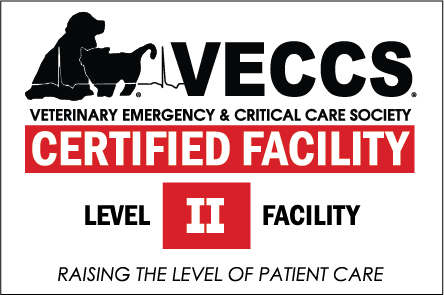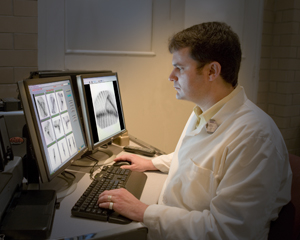
The Veterinary Medical Teaching Hospital at Texas A&M offers both diagnostic and therapeutic nuclear medicine procedures. The procedures are performed and interpreted by experienced radiologists and technicians.
In diagnostic nuclear medicine, a radiopharmaceutical is administered to the patient. A radiopharmaceutical is a substance that contains a radioactive atom and is suitable for use in the diagnosis or treatment of disease. Radiopharmaceuticals are formulated to deliver the radioactive atoms to particular parts of the body. In diagnostic nuclear medicine, radiation emitted by the radioactive atom is detected by a camera, providing information related to the function, position, size, borders and shape of the organ in question. In many cases, nuclear medicine provides important clinical information that is not provided by other imaging modalities. In therapeutic nuclear medicine, emitted radiation can kill cells that have abnormally high metabolic activity. This is the best available treatment in cats for a common hormonal disease called hyperthyroidism. Nuclear medicine patients do not experience pain from their procedures, nor do they experience short-term (deterministic) side effects of radiation exposure.
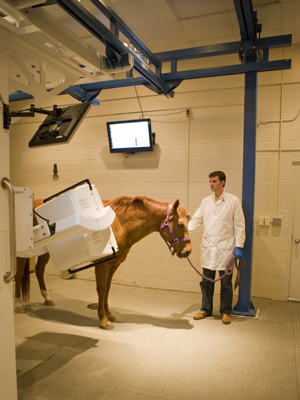
Texas A&M has the capability to perform the following nuclear medicine diagnostic procedures:
| Diagnostic Test | Conditions Tested For | Species |
|---|---|---|
| Musculoskeletal scintigraphy | Active bone disorders | Horses, dogs, cats, others |
| Thyroid scintigraphy | Disorders of the thyroid gland | Dogs, cats |
| Transsplenic portal scintigraphy | Congenital blood vessel abnormalities | Horses (foals), dogs, cats |
| Glomerular filtration rate | Disorders of the kidneys | Dogs, cats |
| Diuretic renal scintigraphy | Ureteral obstruction | Dogs, cats |
| Pulmonary perfusion imaging | Blood clots in the pulmonary arteries | Dogs, cats |
| Right to left shunt analysis | Congenital heart abnormalities | Dogs, cats |
In addition to the aforementioned diagnostic tests, Texas A&M has the ability to create new procedures or customize existing procedures to meet the needs the individual patient.
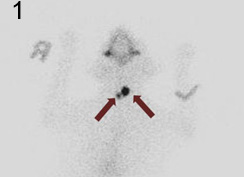
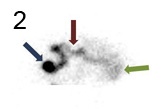
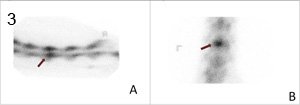
Figure 1: This is an example of a thyroid scan on a cat with hyperthyroidism. There is increased uptake of radiopharmaceutical in the left, and to a lesser extent right lobe of the thyroid gland.
Figure 2: This a transsplenic portal scintigraphic image (summed static nuclear angiogram). There is an abnormal blood vessel bypassing the liver (maroon arrow, portosystemic shunt). The green arrow depicts the heart. The liver is located between the injection site in the spleen (blue arrow) and the heart. Cranial is to the right.
Figure 3: These are right lateral (A) and dorsal (B) musculoskeletal scintigraphic images of the neck of a horse with an infected intervertebral disk and adjacent vertebrae. There is increased uptake of radiopharmaceutical centered over the disk space between the fourth and fifth cervical vertebrae. In A, cranial is to the right. In B, cranial is to the top.


